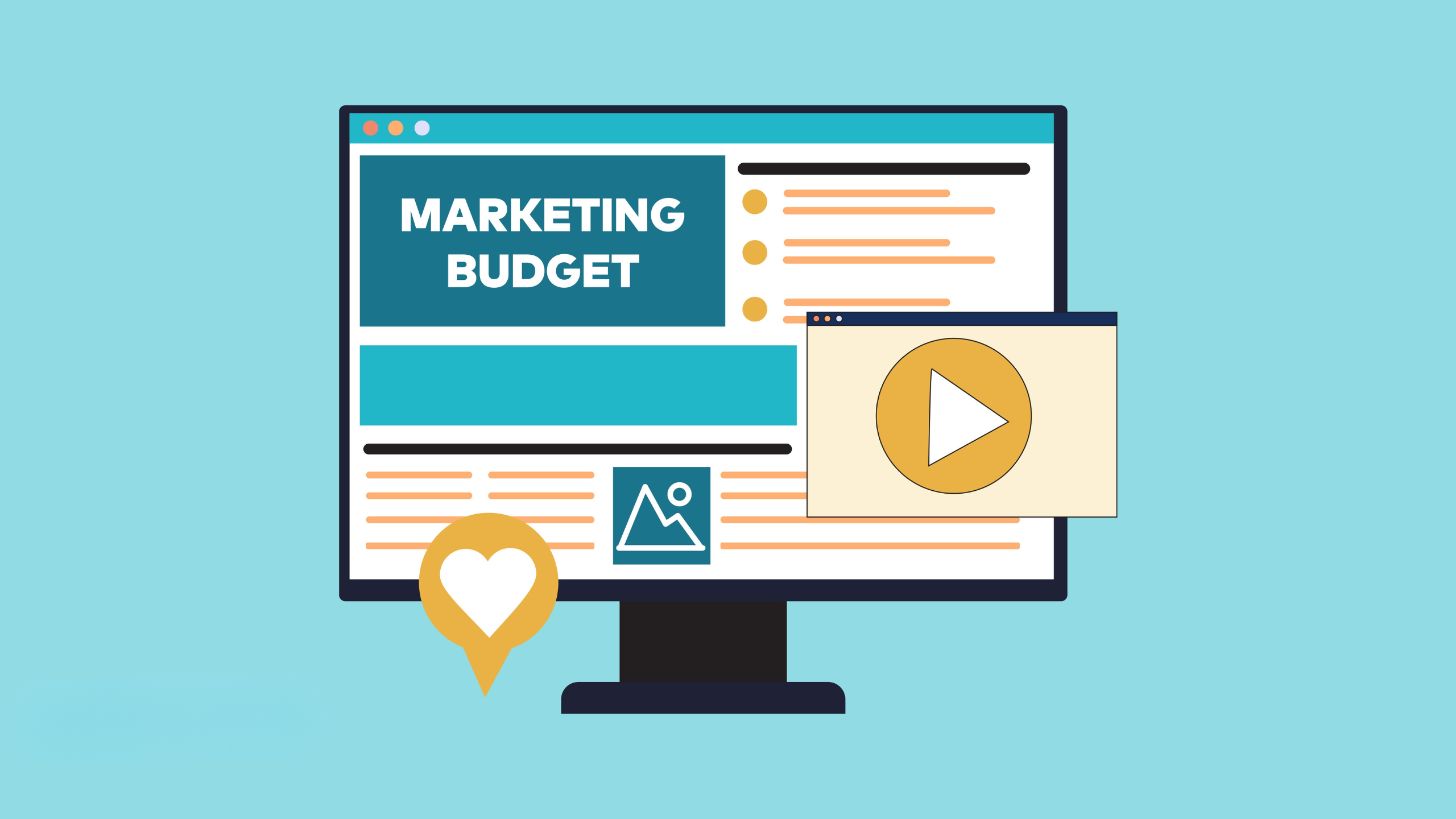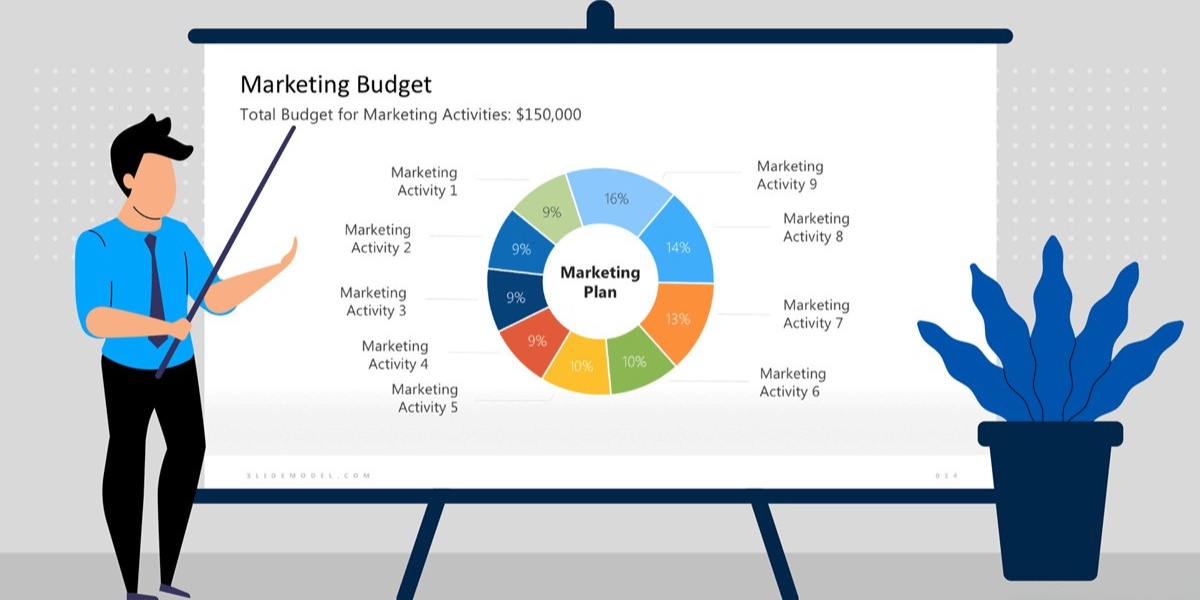Think of a marketing plan as a road map for a business. It shows you where you want to go and how you plan to get there.
It helps you reach your ideal customers and achieve your business goals.
But just like any trip, you need fuel to get your car moving. In business, that fuel is money. All your marketing efforts cost money, from putting an ad on social media to hiring people for your marketing team.
So, how do you keep track of all that money? A good marketing strategy needs a way to plan for and control spending. This is a very important part of making any business plan work. If you don’t know how much you are spending, you can’t know if your plan is successful.
The question then is, which element outlines marketing costs?
This guide will give you a simple and clear answer. We will look at the specific part of a marketing plan that deals with all the money, called marketing expenses. Knowing this will help your small business or large company make smart decisions and grow.
Which Element Outlines Marketing Costs In A Marketing Plan?

The element that outlines marketing costs in a marketing plan is the marketing budget.
It is that simple. The marketing budget is the section of your comprehensive marketing plan dedicated entirely to money. It lists all the money you expect to spend on your marketing activities over a certain period, like a year or a quarter.
It is the financial blueprint for your entire marketing strategy. Without a clear marketing budget, your marketing plan is just a list of ideas with no power to make them happen. It provides the financial resources needed to turn your marketing objectives into reality.
The Marketing Budget: The Core Element Which Outlines Marketing Costs

The marketing budget is more than just a list of numbers. It is a tool that guides every decision you make in your marketing efforts. It connects your big ideas to the real world of spending and earning.
Let’s look closer at what it is, how it is different from a marketing plan, and who is in charge of it.
Defining the Marketing Budget and Its Purpose
A marketing budget is a detailed document that estimates all the costs needed to carry out your marketing plan.
Its main purpose is to allocate financial resources to different marketing channels and activities. It tells you how much money you have for digital marketing, content creation, advertising, and more. This document is a critical part of your business strategy.
The purpose of the budget is to control spending and measure results.
It helps a company reach its specific goals, like increasing brand awareness or generating more sales. It also ensures that the marketing team spends money wisely. The budget forces the team to think about which marketing methods will give the best results for the money spent.
It makes sure every dollar has a purpose that connects back to the main business objectives.
The Difference Between A Marketing Plan and A Marketing Budget
It is easy to mix up a marketing plan and a marketing budget, but they are two different things. Think of it this way:
A marketing plan is the “what” and “why.” It is a broad document that lays out your entire marketing strategy. It includes your mission statement, business objectives, and an analysis of the marketing environment.
It contains your SWOT analysis (Strengths, Weaknesses, Opportunities, Threats) and a competitive analysis. It also defines your target audience by creating buyer personas and explains your company’s value proposition.
The plan describes the specific actions you will take to reach your target market. The marketing budget is the “how much.” It is just one piece of the entire marketing plan. It gives the financial details for the action plan laid out in the marketing document.
While the plan might say “we will run social media marketing campaigns,” the budget will say “we will spend $5,000 on social media ads.” The budget turns the strategy into a financial reality. You cannot have an effective marketing plan without a realistic budget to support it.
Who is Responsible For Creating and Managing This Element?
Creating and managing the marketing budget is a team effort, but it is usually led by a marketing manager or director. These leaders work with their team members to figure out how much money is needed for different marketing campaigns.
For a small business, the owner might be the one who creates the budget.
The marketing team provides ideas on what is needed to reach the marketing objectives.
For example, the content marketing specialist will know the costs of writing blog posts or making videos. The advertising manager will know the cost of running ads. The leader then puts all of this information together.
They must also work with the finance department and company leaders to get the budget approved. Once it is approved, the marketing manager is responsible for tracking spending and making sure the team stays within the budget.
They also report on how the spending is helping the company meet its key performance indicators. Good management of the budget is key to proving the value of all marketing efforts.
What Key Expenses Are Outlined In A Comprehensive Marketing Budget?

A comprehensive marketing plan needs a budget that covers all possible marketing expenses. Breaking down the costs helps you see where your money is going and manage it better. Here are the main types of costs you will find in a marketing budget.
Digital Advertising Costs (PPC, Social Media Ads, Etc.)
This is a big part of most marketing budgets today. It includes the money you spend on digital marketing ads to reach new customers.
This can be for pay-per-click (PPC) ads that appear on a search engine like Google. It also includes money for ads on social media platforms like Facebook, Instagram, and LinkedIn. These costs are often easy to track and can directly support lead generation.
Content Creation and SEO Expenses
Content marketing is about creating helpful and interesting things for your target audience. This includes writing blog posts, making videos, creating infographics, and more. The costs here can include paying writers, videographers, or for graphic design.
Another key expense is search engine optimization (SEO). SEO helps your website show up higher in search engine results. Part of SEO is building quality links from other websites to yours.
For SaaS businesses, this is very important for growth. Many businesses set aside a part of their budget to hire an agency like VH-info. We specialize in building high-quality backlinks that improve your rankings and authority, making it easier for your ideal customers to find you.
Personnel and Team Salaries
This category includes the salaries and benefits for everyone on your marketing team.
This covers your marketing manager, content creation specialists, social media managers, and any other team members involved in marketing activities. Sometimes, a company’s human resources department helps calculate these costs.
People are often the biggest expense in a marketing budget, but they are also your most important asset.
Marketing Technology and Software (MarTech Stack)
The modern marketing team uses a lot of software to do their job well. This is often called a “MarTech stack.”
These costs include tools for email marketing, software for managing social media marketing, and platforms for analyzing data. It also includes customer relationship management (CRM) software that helps track interactions with new customers and existing ones.
These tools help automate tasks and provide valuable data on your marketing efforts.
Public Relations (PR), Events, and Sponsorships
This part of the budget is for activities that build brand awareness and public image.
It can include hiring a PR agency to get your company featured in news articles. It could also be the cost of hosting or attending industry events and trade shows. Sponsoring a local event or a podcast that your target market listens to would also fall into this category.
These activities help build trust and credibility for your new business.
Market Research and Analytics Costs
To make smart decisions, you need data. This budget category covers the cost of getting that data. It might include paying for market research reports, surveys to understand customer needs, or tools for competitive analysis. This research helps you understand market conditions and market trends. It also helps you perform a situation analysis to see where your business stands in the market share race.
How to Create the Element That Outlines Your Marketing Costs: A Step-by-Step Process

Creating a marketing budget may seem hard, but you can do it by following a clear process.
Here are the steps to build a budget that supports an effective marketing plan.
Step 1: Align Your Budget With Overall Business Goals
Your marketing budget should not be created in a bubble. It must directly support your company’s main business goals.
Start by looking at the company’s overall business plan. Are you trying to grow into a new market? Launch a new product? Increase your market share? Your marketing objectives should line up with these goals, and your budget should give you the money to achieve them.
For example, if a key business objective is lead generation, you should put more money into activities that bring in leads.
Step 2: Analyze Historical Data and Industry Benchmarks
Don’t start from scratch. Look at what your company has spent on marketing in the past. What worked and what did not?
Use this information to guide your new budget. Also, do some market research to see what other companies in your industry spend on marketing. This is called benchmarking. While you don’t have to copy them, it gives you an idea of what is considered normal.
This helps you create a realistic budget based on solid data and best practices.
Step 3: Choose Your Marketing Channels and Tactics
Now, decide where you will spend your money.
Based on your market analysis and buyer personas, choose the marketing channels that are most likely to reach your target market.
Will you focus on content marketing and SEO? Or will you invest heavily in social media marketing? Your marketing mix—the combination of product, price, place, and promotion—will help you decide. Make a list of all the specific actions and marketing campaigns you plan to run.
Step 4: Allocate Funds and Finalize Your Budget
Assign a specific cost to each marketing activity on your list. This is where you put numbers to your plans. Be as detailed as you can.
For example, instead of just “Content Creation,” break it down into “Blog Posts,” “Video Production,” and “Graphic Design.” Add up all the costs to get your total proposed marketing budget. This becomes the financial action plan for your annual marketing plan.
Step 5: Implement, Monitor, and Adjust for ROI
A budget is not something you set and forget. Once your budget is approved, it is time to put your marketing plan into action.
As you spend the money, you must track your results. Use key performance indicators (KPIs) to measure the success of your marketing efforts. Are you getting a good return on investment (ROI)? If some marketing activities are not performing well, be ready to move money to the channels that are giving you better results. A good budget is flexible and allows for adjustments based on performance.
Why Is It Important to Have An Element That Clearly Outlines Marketing Costs?

Having a clear marketing budget is extremely important for any business, big or small. It is the backbone of a strong marketing strategy and provides many benefits that help a company succeed. Here are three big reasons why it is so important.
To Ensure Financial Accountability and Control
A marketing budget makes the marketing team responsible for how they spend the company’s money.
When every dollar is assigned to a specific purpose, it reduces wasteful spending. It creates a culture of accountability where team members think carefully before spending money. This control helps the business manage its financial resources effectively.
It ensures that the marketing expenses are aligned with the overall business strategy and not just spent on random ideas.
To Effectively Measure Return on Investment (ROI)
One of the most important questions in marketing is: “Are our efforts working?” A marketing budget is essential for answering this question.
By tracking how much you spend on different marketing campaigns and comparing it to the results (like new sales or leads), you can calculate your return on investment (ROI). This shows you which marketing methods are most profitable. Measuring ROI helps you prove the value of marketing to company leaders and justifies future spending. It allows you to make data-driven decisions instead of guessing.
To Secure Funding and Get Stakeholder Approval
If you want your bosses or investors to give you money for marketing, you need to show them a solid plan. A well-researched marketing budget does just that. It shows that you have thought through your action plan and understand the costs involved.
It gives them confidence that you will spend their money wisely. A clear budget is a key part of your pitch to get approval for your annual marketing plan. Without it, your great ideas are less likely to get the funding they need to become a reality.
FAQ’s:
Which Marketing Plan Element Details Marketing Costs?
The marketing budget is the part of a marketing plan that gives all costs for marketing. It shows each planned cost for your ads and other work. This helps you know how much money will be spent on every step of your marketing.
Should You Break Down Or Estimate Costs in Your Marketing Plan?
You should do both. In the main body of your marketing plan, you might use estimates. But in the marketing budget section, you should break down costs as much as possible to create a detailed financial plan.
Where Do Marketing Costs Appear In A Typical Marketing Plan?
Marketing costs are listed in their own dedicated section, which is called the marketing budget. This section usually appears after the marketing strategy and action plan have been described in the executive summary or main document.
What Percentage Of A Company’s Revenue Should Be Allocated to the Marketing Budget?
There is no single magic number. It depends on the industry, company size, and business goals. Many businesses spend between 5% and 12% of their total revenue on marketing. A new business trying to grow fast might spend more.
How Often Should A Marketing Budget Be Reviewed and Adjusted?
A marketing budget should be reviewed regularly. Many companies review it every month or every quarter. This allows the marketing team to make adjustments based on performance and changing market conditions or external factors.
What is the Difference Between A Marketing Plan and A Marketing Budget?
A marketing plan is the overall strategy that outlines your goals, target audience, and the marketing activities you will use. The marketing budget is the part of that plan that lists the specific costs for all those activities.
What Are the Most Common Mistakes to Avoid When Creating A Marketing Budget?
Some common mistakes are not connecting the budget to clear business objectives, not tracking results (ROI) to see what is working, setting an unrealistic budget (too high or too low), and not being flexible enough to adjust the budget when needed.
Conclusion
In any effective marketing plan, the element that outlines marketing costs is the marketing budget.
It is the financial foundation of your entire marketing strategy. This document does more than just list expenses; it gives your team a clear path, ensures you are financially responsible, and helps you prove the value of your work.
A strong budget helps a small business compete with larger ones and enables any company to achieve its specific goals for growth, customer satisfaction, and profitability. If your marketing budget has room for search engine optimization, remember that high-quality link building is one of the best ways to get long-term results.
At VH-info, we focus on performance-based link building for SaaS companies. We help you use your budget wisely to get backlinks that drive real traffic and boost your authority.



